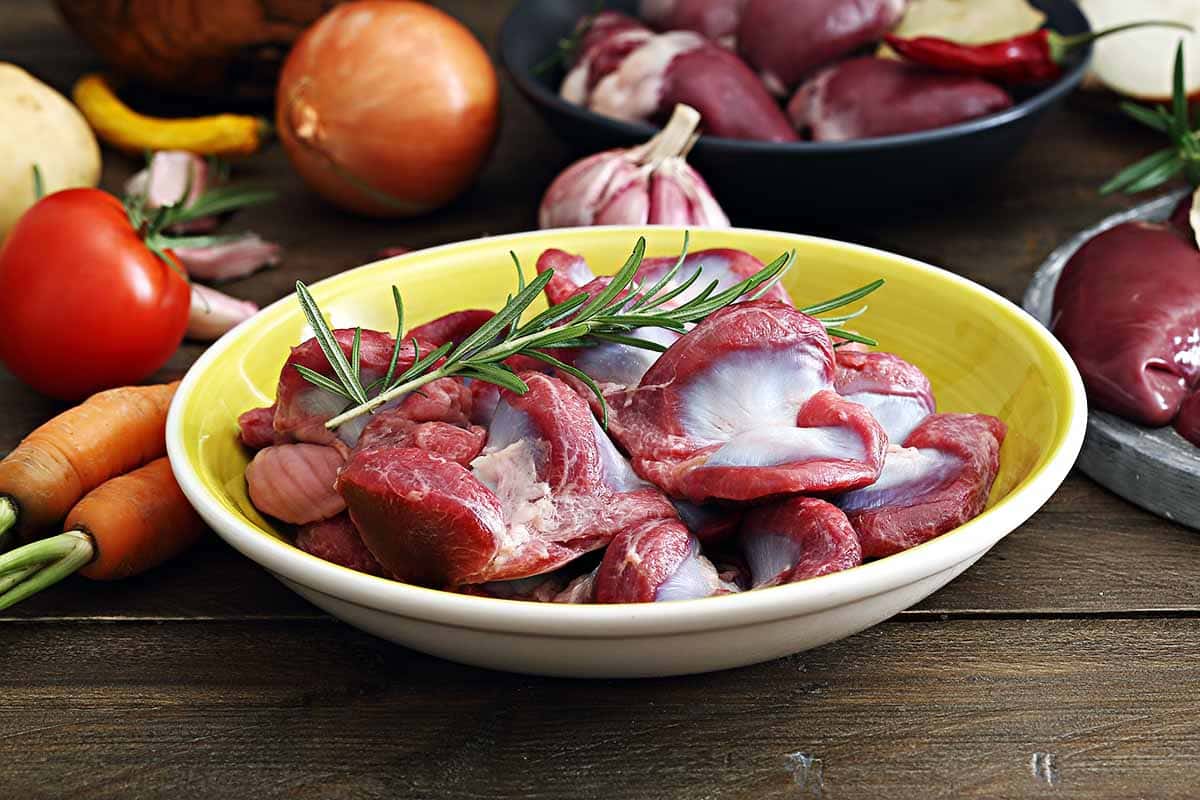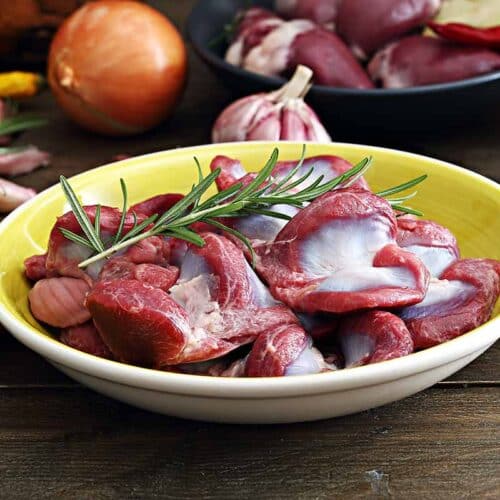Chicken gizzards are a widely enjoyed delicacy around the world. They have been part of traditional diets for centuries due to their rich flavor and variety of nutrients. What Are Chicken Gizzards?
You’re not alone if you have not had chicken gizzards and don’t know what they are. Some people consider them an exotic food item, as it is not every day you get to eat chicken insides.
Whether you’re looking for a unique dish to add to your weekly rotation or just want to explore some new flavors, chicken gizzards can be a great way to switch things up. What do they taste like? In this food guide, we’ll answer these questions and more.

Chicken gizzards are a muscle found in the digestive system of many poultry, including chickens. They are typically small and dark in color, with a tough texture similar to beef jerky.
Chicken gizzards are among the many organs of the chicken. You’d have to learn more about the chickens to understand what gizzards are.
For starters, did you know that chickens do not have teeth? Unlike most animals, they do not chew on their food before swallowing. How do they do it? Well, they do not have to chew because of their gizzard.
The gizzard is an essential part of the chicken’s digestive tract. It is a muscle that contracts to grind the chicken’s food. However, for the gizzard to work how it’s supposed to, it needs the help of pebbles and grits.
For this reason, you’ll also see chickens taking in small stones and other debris by mouth.
The gizzard is a muscle that does a lot of work. So, they can be tough and chewy. You should know how to cook them properly to fix this unpleasant texture.
Gizzards have a rich, meaty flavor that many compare to the liver. The texture of gizzards can vary depending on how they are cooked; they can be tender and juicy when roasted or stewed, or chewy if fried.
Gizzards usually have a slightly salty taste as well. Depending on the recipe, you may also taste a hint of herbs, garlic, onions, or other seasonings.
Also, despite being one of the animal’s organs, chicken gizzards do not taste like any other organ.
So, what do gizzards taste like? Generally, chicken gizzards taste like dark chicken meat but are a bit more intense. That said, if you like eating chicken, you’ll surely love eating gizzards too!
If you’re unfamiliar with the parts of the chicken considered dark, they are the thighs and legs. On the other hand, white meat is the breast, wings, and back.
Unless you cook a special dish that uses them as the main ingredient, gizzards are usually chopped into small pieces when included in recipes.
When chopped in this manner, you won’t even be able to tell that you’ve eaten them. They’ll blend right in with the dark meats.
Giblets are what most people call the miscellaneous chicken parts. This umbrella term includes the liver, neck, heart, kidneys, and yes, gizzards. So when you say gizzard, it is only one of the many kinds of giblets.
Gizzards are giblets, but giblets are not always gizzards.
If you plan to cook just gizzards or livers, refrain from asking for a bag of giblets from the store. Or else you’ll end up with an assortment of organs and other chicken insides that you may not need for your recipe.
Chicken gizzards are not only delicious but also surprisingly nutritious, providing an excellent source of lean protein, B-vitamins, and essential minerals.
They are an excellent source of lean protein, providing 26 grams per 4-ounce serving. This makes them a great choice for anyone looking to add more protein to their diet.
In addition, they contain a variety of B-vitamins, including thiamin, riboflavin, niacin and vitamin B6.
Chicken gizzards are also low in fat and calories, making them a great option for those looking to watch their waistline.
They are an excellent source of iron as well as phosphorus and zinc— essential minerals for maintaining healthy bones and teeth.
When you buy chicken gizzards from the store, they are probably already clean. If not, you’d have to clean the fresh gizzards yourself.
The gizzard houses dirt, pebbles, and other debris that aid food grinding. But the good thing is there is a pouch-like structure within the gizzard. This pouch holds together all the things you need to discard.
The key to cleaning the gizzards is to avoid puncturing this pouch. If you poke the pouch, the debris inside will spill all over the rest of the gizzard. They will give the gizzards an unpleasant smell that even cooking won’t remove.
The debris might also contain organisms that can make the gizzard unsafe to eat.
Unlike chicken meat, gizzards are tough. Because of this, you should cook them in a different way than the rest of the chicken.
Instead, you should cook gizzards with moist heat using the low and slow methods.
Never toss them in a deep fryer before you’ve braised them. Cooking chicken gizzards this way will result in a rock-hard and unpleasant texture.
The best way to cook gizzards is to braise them slowly until they’re fork-tender. The braising time depends on many factors but usually takes between 30 minutes to 5 hours.
If you want them served fried, drain them properly after braising them and fry them as usual.
The gizzard forms part of the chicken’s digestive tract. It grinds the bird’s food, as chickens do not have teeth.
To cook gizzards so they’re not tough, you should braise them. The key is moist heat with low temperature and slow cooking time.
You can poke them with a fork to know when the gizzards are already done. If they’re firm, then they’re probably done. The safest way to tell is by using a meat thermometer. If the internal temperature of the gizzards reads 165F, then they’re done and safe to eat.
If you’ve ever grabbed a bag of chicken giblets from the grocery store, you might have gotten a gizzard with it. So, what are chicken gizzards? A chicken gizzard is one of the bird’s internal organs. It is a vital part of the chicken’s digestive system which grinds the food, so it becomes ready for digestion.
They’ll be chewy and unpleasant if you don’t braise the gizzards before frying them. When you properly cook gizzards, they should be tender. And they’ll taste like chicken dark meat, just a bit more intense.






